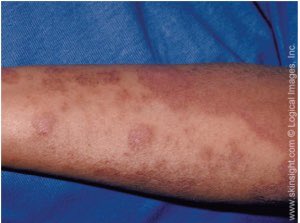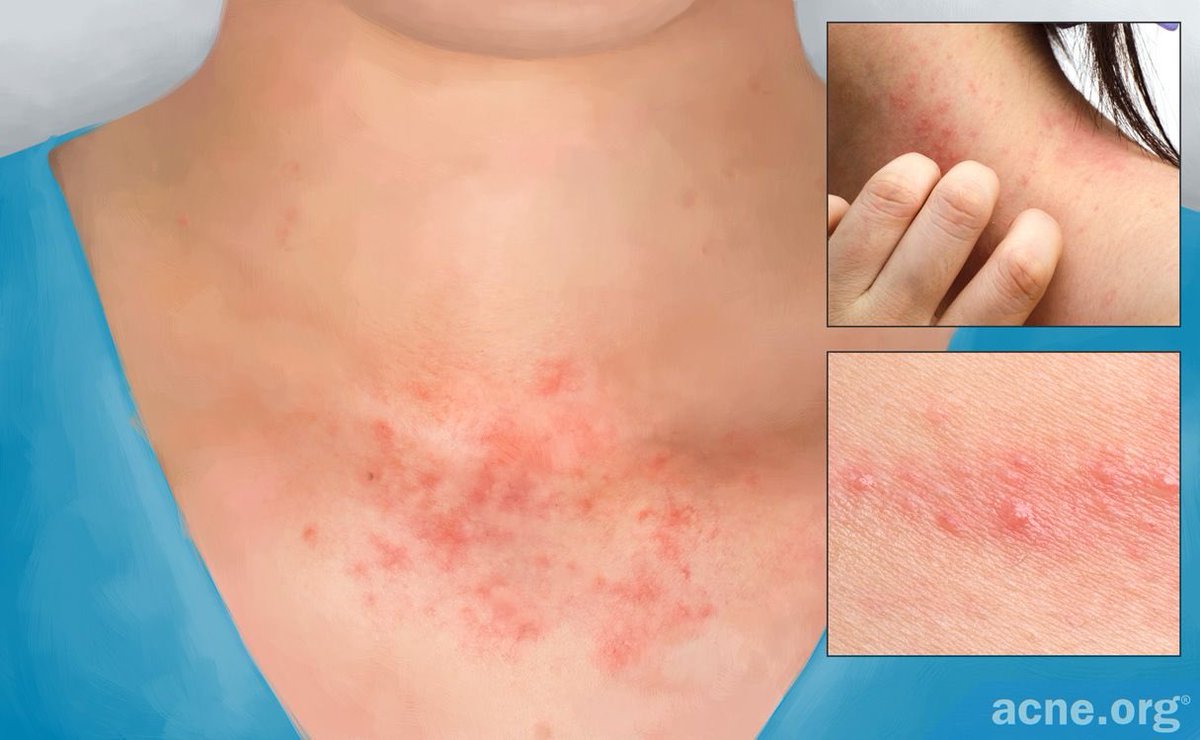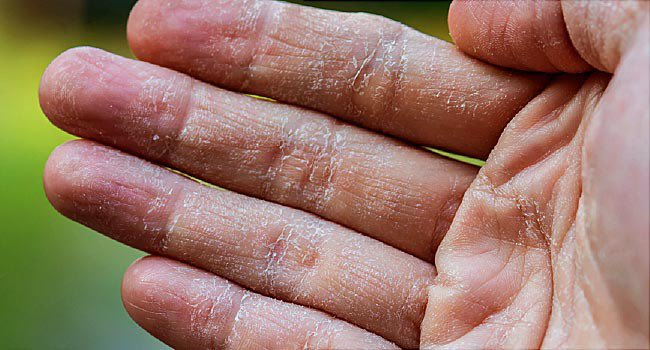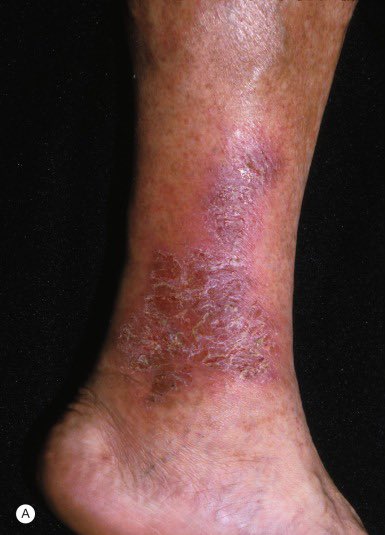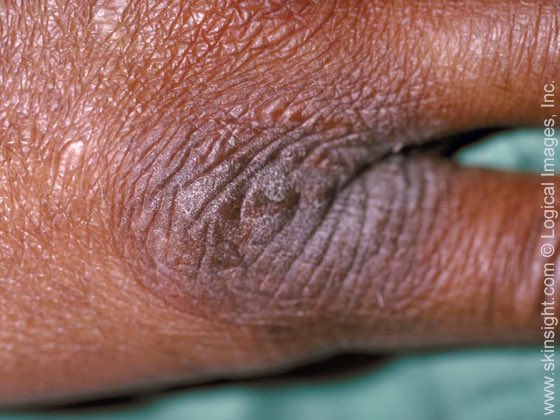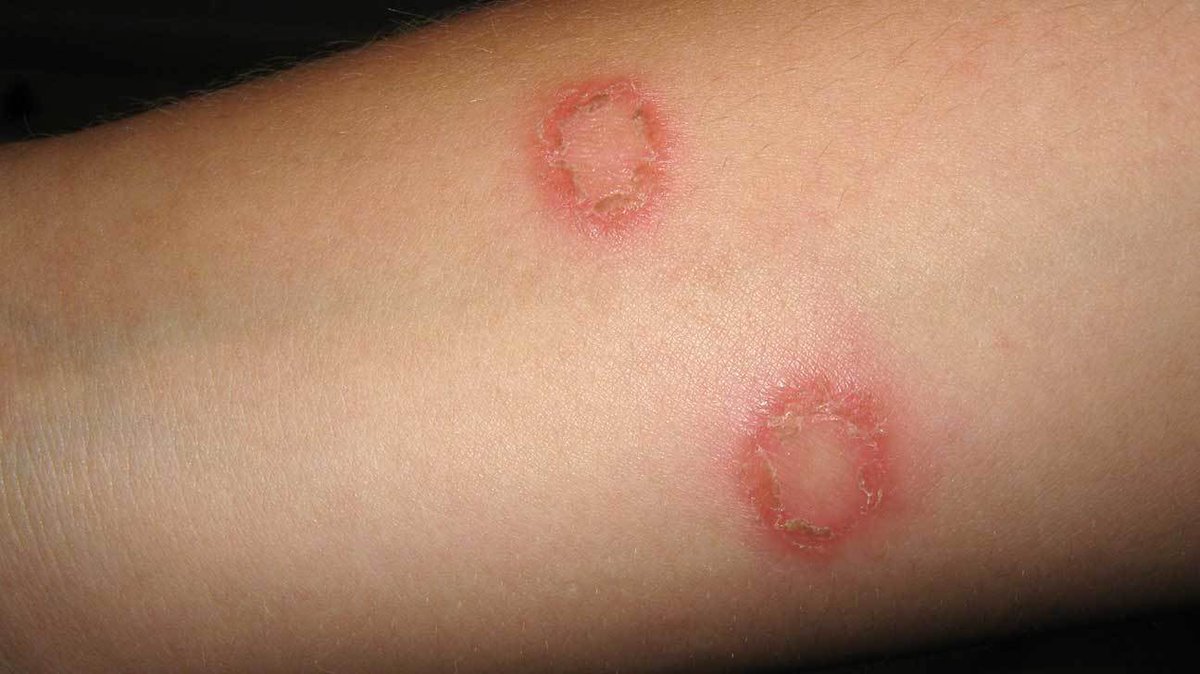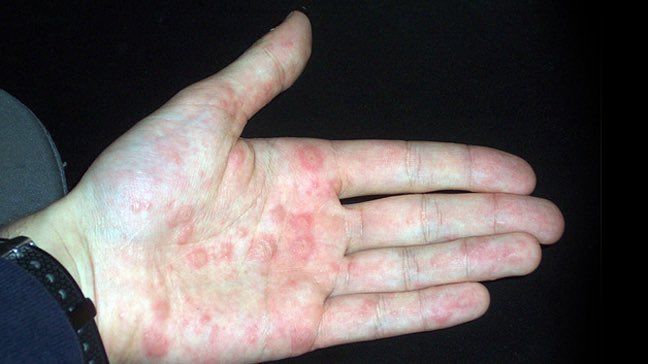Hey everyone, it’s Lily here again! I hope you’re all doing well during these trying times.  https://abs.twimg.com/emoji/v2/... draggable="false" alt="💙" title="Blue heart" aria-label="Emoji: Blue heart">
https://abs.twimg.com/emoji/v2/... draggable="false" alt="💙" title="Blue heart" aria-label="Emoji: Blue heart"> https://abs.twimg.com/emoji/v2/... draggable="false" alt="✨" title="Sparkles" aria-label="Emoji: Sparkles">
https://abs.twimg.com/emoji/v2/... draggable="false" alt="✨" title="Sparkles" aria-label="Emoji: Sparkles">
So many of you have expressed you’ve been experiencing more eczema flare ups than usual due to stress, and I’m here to help! Follow along with me :) #TopicalsandEczema
So many of you have expressed you’ve been experiencing more eczema flare ups than usual due to stress, and I’m here to help! Follow along with me :) #TopicalsandEczema
So first, I have a few questions for all of you:
• Do you have eczema?
• How often do you have flare ups?
• Where do you typically have flare ups (body parts)?
• How do you manage your flare ups?
• And lastly, what have you observed to trigger them?
• Do you have eczema?
• How often do you have flare ups?
• Where do you typically have flare ups (body parts)?
• How do you manage your flare ups?
• And lastly, what have you observed to trigger them?
Let’s define eczema:
It is medically known as atopic dermatitis. There‘s multiple forms of dermatitis, eczema is the most common. It’s a chronic condition that primarily affects the skin’s barrier, causing it to struggle with retaining moisture.
Source: https://www.ncbi.nlm.nih.gov/books/NBK538209/">https://www.ncbi.nlm.nih.gov/books/NBK...
It is medically known as atopic dermatitis. There‘s multiple forms of dermatitis, eczema is the most common. It’s a chronic condition that primarily affects the skin’s barrier, causing it to struggle with retaining moisture.
Source: https://www.ncbi.nlm.nih.gov/books/NBK538209/">https://www.ncbi.nlm.nih.gov/books/NBK...
Eczema also results in your skin having a dysfunctional inflammatory response.
This means that, certain things that people without eczema wouldn’t react to (fragrances, detergents, allergens, fabrics etc.) someone with eczema is more likely to experience inflammation from.
This means that, certain things that people without eczema wouldn’t react to (fragrances, detergents, allergens, fabrics etc.) someone with eczema is more likely to experience inflammation from.
As if eczema itself isn’t bad enough, it actually comes in 7 different types! Let’s break them down:
• Atopic dermatitis
• Contact dermatitis
• Hand eczema
• Stasis dermatitis
• Neurodermatitis
• Nummular dermatitis
• Dyshidrotic dermatitis
• Atopic dermatitis
• Contact dermatitis
• Hand eczema
• Stasis dermatitis
• Neurodermatitis
• Nummular dermatitis
• Dyshidrotic dermatitis
Atopic Dermatitis:
The most common form of eczema, is typically part of what’s referred to as an “atopic triad.” The other 2 parts being asthma and allergies.
I unfortunately have the atopic triad. I was diagnosed with eczema, asthma, and allergies fairly close together.
The most common form of eczema, is typically part of what’s referred to as an “atopic triad.” The other 2 parts being asthma and allergies.
I unfortunately have the atopic triad. I was diagnosed with eczema, asthma, and allergies fairly close together.
Contact dermatitis:
• Occurs when you come into contact with a specific irritant. Common irritants are fragrances, scented laundry detergents, itchy fabrics, cosmetics, soap, and even jewelry. How many of you have formed a rash from a necklace or bracelet?
• Occurs when you come into contact with a specific irritant. Common irritants are fragrances, scented laundry detergents, itchy fabrics, cosmetics, soap, and even jewelry. How many of you have formed a rash from a necklace or bracelet?
Hand Eczema:
• Primarily affects hands. People who frequently use cleaning materials and don’t regularly use gloves experience this often. Things like bleach, harsh soaps, and heavily scented lotions can trigger it. All of these can damage the protective layer of the epidermis.
• Primarily affects hands. People who frequently use cleaning materials and don’t regularly use gloves experience this often. Things like bleach, harsh soaps, and heavily scented lotions can trigger it. All of these can damage the protective layer of the epidermis.
Stasis Dermatitis:
• This occurs in the lower legs and is typically a result of fluid buildup. Essentially, pressure builds up in the legs due to lack of proper circulation in the veins. Fluid then leaks out to the skin which causes irritation, swelling, and redness.
• This occurs in the lower legs and is typically a result of fluid buildup. Essentially, pressure builds up in the legs due to lack of proper circulation in the veins. Fluid then leaks out to the skin which causes irritation, swelling, and redness.
Neurodermatitis:
• This type of eczema is commonly found in the wrist, neck, forearms, legs, and anal region. It starts as a small and slightly itchy patch, then eventually develops and spreads into raised, rough, and thick patches that are severely itchy and feel leathery.
• This type of eczema is commonly found in the wrist, neck, forearms, legs, and anal region. It starts as a small and slightly itchy patch, then eventually develops and spreads into raised, rough, and thick patches that are severely itchy and feel leathery.
Nummular Dermatitis:
• Also known as discoid eczema. This form of eczema appears as coin shaped rashes, patches, or sores. It can occur from insect bites, burns, and even injuries such as scratches. Topical antibiotics can also cause it. Nickel (the metal) can cause it too.
• Also known as discoid eczema. This form of eczema appears as coin shaped rashes, patches, or sores. It can occur from insect bites, burns, and even injuries such as scratches. Topical antibiotics can also cause it. Nickel (the metal) can cause it too.
And finally, Dyshidrotic dermatitis:
• Also referred to as pompholyx. It presents itself as fluid filled blisters on the soles of the feet, palms of the hands as well as the fingers. Severe itching, bleeding, and peeling are common with this.
• Also referred to as pompholyx. It presents itself as fluid filled blisters on the soles of the feet, palms of the hands as well as the fingers. Severe itching, bleeding, and peeling are common with this.
Lastly, images of each type of eczema. From left to right in the order I previously discussed them!
• Atopic dermatitis
• Contact dermatitis
• Hand Eczema
• Stasis dermatitis
(Cont.)
• Atopic dermatitis
• Contact dermatitis
• Hand Eczema
• Stasis dermatitis
(Cont.)
So how is eczema managed? It’s not simple, mainly because eczema is a chronic condition that doesn’t have a cure, and the cause of it is largely unknown. But, here are my favorite and most effective ways of managing eczema.
• Occlusives
• Lactic Acid
• Humectants
• Occlusives
• Lactic Acid
• Humectants
Yes, lactic acid is a humectant, I highlighted it separately because it also functions as an exfoliant. Which is extremely helpful with treating the roughness and discoloration that comes with eczema.
Humectants:
• Glycerin
• Hyaluronic acid
• Urea
• Honey
• Sodium PCA
For eczema, urea and glycerin function particularly well at minimizing dryness.
• Glycerin
• Hyaluronic acid
• Urea
• Honey
• Sodium PCA
For eczema, urea and glycerin function particularly well at minimizing dryness.
Along with humectants, Occlusives, and lactic acid, it’s also *crucial* to have ceramides, cholesterol, and essential fatty acids (EFAs).
Utilizing lipids such as these accelerates the restoration of the epidermal structure (your barrier). Essentially, they speed up healing.
Utilizing lipids such as these accelerates the restoration of the epidermal structure (your barrier). Essentially, they speed up healing.
Studies have shown that people with atopic dermatitis are deficient in ceramides 1 and 3. Which is why is important to replenish them topically. Also, gamma linoleic acid (an EFA), functions as a humectant while reducing inflammation. Eczema is an inflammatory disease!
GLA also encourages the skin’s natural ceramide production. One thing that’s important about essential fatty acids, the part “essential” means that the body cannot synthesize them (produce them). Which means they HAVE to be received from outside sources, such as food/topicals.
Green tea (camellia sinensis extract), madecassoside (central’s extract), and licorice root extract are also anti inflammatory and help in wound healing.
If you have eczema, you may have itched your skin to the point of forming a scab. These ingredients will *save* your skin.
If you have eczema, you may have itched your skin to the point of forming a scab. These ingredients will *save* your skin.
Licorice root specifically has been studied to reduce itching. If you’re like me, and you can’t resist itching your flare ups, licorice root will help significantly.
The last ingredient highlight is Chinese rhubarb extract, which is anti inflammatory and anti microbial. The anti microbial aspect is especially important, because with eczema, due to the increased likelihood of broken skin, bacteria enters and can cause infection.
So, which ingredients specifically are the Holy Grails of eczema management?
• Green tea
• Licorice root
• Madecassoside
• Urea
• Glycerin
• Lactic acid
• Chinese rhubarb
• Ceramides
• Cholesterol
• Essential fatty acids
• Petroleum jelly
• Evening primrose oil
• Green tea
• Licorice root
• Madecassoside
• Urea
• Glycerin
• Lactic acid
• Chinese rhubarb
• Ceramides
• Cholesterol
• Essential fatty acids
• Petroleum jelly
• Evening primrose oil
To wrap this up, which type of eczema have you been diagnosed with or which type do you experience most (refer to images above for reference)?
I have regular atopic dermatitis, contact dermatitis, nummular dermatitis, and occasionally hand eczema. Fun! https://abs.twimg.com/emoji/v2/... draggable="false" alt="🤣" title="Rolling on the floor laughing" aria-label="Emoji: Rolling on the floor laughing">
https://abs.twimg.com/emoji/v2/... draggable="false" alt="🤣" title="Rolling on the floor laughing" aria-label="Emoji: Rolling on the floor laughing">
What about you?
I have regular atopic dermatitis, contact dermatitis, nummular dermatitis, and occasionally hand eczema. Fun!
What about you?
Btw, our eczema treatment launches later this spring with SEVEN (7) of the above holy grail ingredients  https://abs.twimg.com/emoji/v2/... draggable="false" alt="😉" title="Winking face" aria-label="Emoji: Winking face"> it’s a life changing topical treatment for those with severe and persistent eczema! More details coming soon at http://mytopicals.com"> http://mytopicals.com
https://abs.twimg.com/emoji/v2/... draggable="false" alt="😉" title="Winking face" aria-label="Emoji: Winking face"> it’s a life changing topical treatment for those with severe and persistent eczema! More details coming soon at http://mytopicals.com"> http://mytopicals.com
And finally, if you have hyperpigmentation from your eczema, please refer to this previous hyperpigmentation thread on how to treat it effectively!
This thread is for both face and body hyperpigmentation. https://twitter.com/mytopicals/status/1245864903593746432?s=21">https://twitter.com/mytopical... https://twitter.com/mytopicals/status/1245864903593746432">https://twitter.com/mytopical...
This thread is for both face and body hyperpigmentation. https://twitter.com/mytopicals/status/1245864903593746432?s=21">https://twitter.com/mytopical... https://twitter.com/mytopicals/status/1245864903593746432">https://twitter.com/mytopical...

 Read on Twitter
Read on Twitter